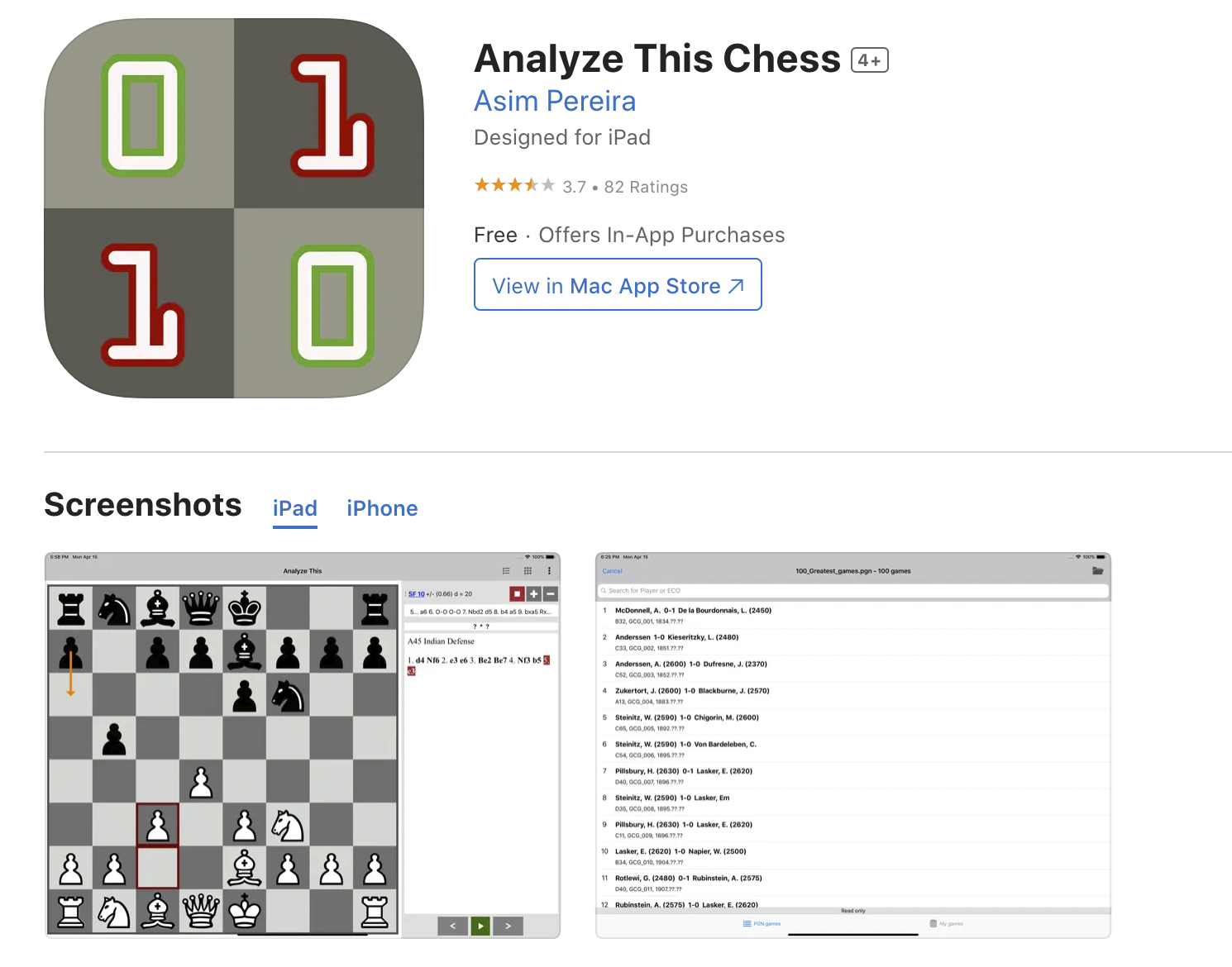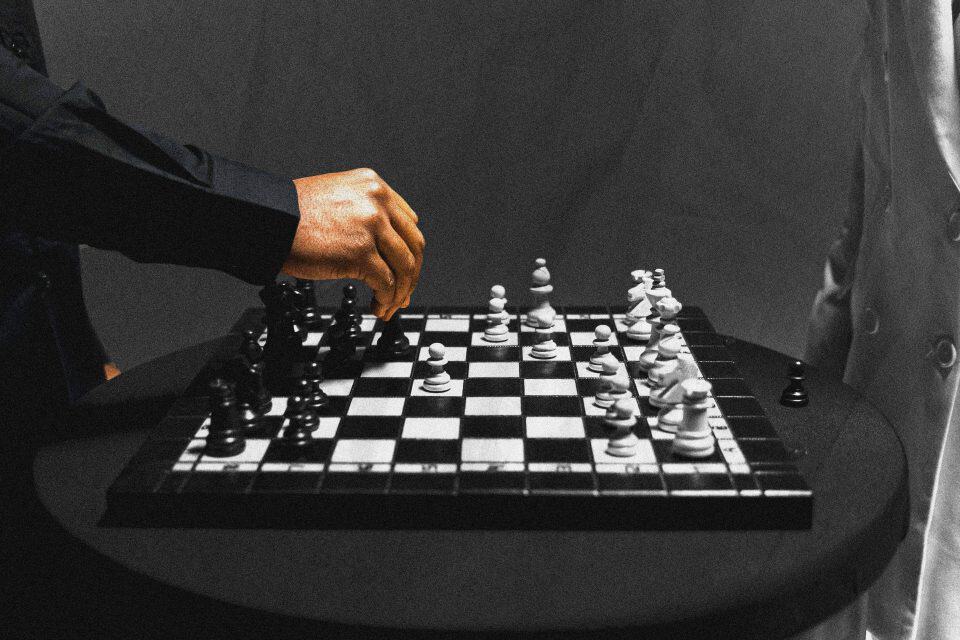Wondering about how to get to 1800 chess rating?
Honestly, it depends on what level you’re starting from. If you’re a total beginner that just learned the rules of the game recently, it may take between 15 months to 3 years.
But if you’re a novice with basic knowledge of moves like capturing and castling, it might take a shorter time (ideally 9 months to 2 years) but it’s not a walk in the park.
Players rated 1800 and above are advanced players who have a very good grasp of openings, middle games, and endgames.
They’ve trained themselves so well that they already understand most checkmate patterns, can easily see cheap traps and know how to set up a formidable plan in chess.
To get to this level, you’ll need to study widely and train constantly.
Our founder, John Iwuozor also struggled to reach the 1800 rating and after much efforts, he’s easily past it now.
So, we got some tips from him and other expert players on how they were able to bulldoze their way to 1800 chess rating, going to 2000+.
First Things First…
The first observation was that these players studied lots of chess materials – books, puzzles, worksheets, you name it.
Some of recommended books include:
- Modern Chess by Nick de Firmian
- Logical Chess by Irving Chernev
- Bobby Fischer teaches chess by Bobby Fischer
- How to reassess your chess by Jeremy Silman
- Think like a grandmaster by Alexander Kotov
These books were recommended because they cut across all levels of chess from beginner to intermediate level.
Next, they trained extensively with chess engines. Chess engines help with analysis of your games by showing you what you played incorrectly and what should have been played instead.
In formal terms, a chess engine contains a Search Function that calculates millions of possible continuations from any given position and evaluates these positions based on different positional factors. The combination of those two components allows it to find what is considered to be the best move to play per any position.
John says, ” I think every newbie looking to improve their chess should have the ‘Analyze This’ app on their mobile phones. It’s like having a grandmaster at your side pointing out deep and amazing moves you missed out on, helping you avoid the same mistake next time”.

You can also install chess programs or engines on your PC and train with them. Some popular ones include Fritz, ChessBase, Stockfish, Komodo, Shredder Chess and Rybka.
Some of these are free while some requires your purchase. However, they usually come with a database of games or you can install one yourself.
You can make use of these chess programs to analyze your previous games or you can check the database and go through games that have been played that are similar to your playing style.
How Much Chess Principles Do You Know?
It’s great to study chess materials but are you actually retaining the information you’re gathering? Or you just throw away what you’ve learnt when playing?
It’s important to answer these questions. That’s because 1800+ players do not have other chess principles they follow.
They play the same board game, follow the same FIDE rules, observe same chess principles and play the same tactics you come across.
The only difference? They don’t just learn and forget. They learn and retain the information for the next game.
This allows them to keep getting better because they can recall their errors and improve on it.
As a beginner or casual chess player, you must understand all the different phases of chess: Openings, Middle game and Endgame.
This quote comes to mind:
“Play the opening like a book, the middle game like a magician, and the endgame like a machine.”
― Rudolf Spielmann
Playing The Chess Opening
Peter (2227 FIDE), another impressive chess player (FIDE master, actually) we interviewed explained the importance of openings.
According to him, “Openings make or break your game. Play weak moves in the opening and you’ll find yourself struggling for the rest of the game. Play good moves and you’ll have a playable position. Play great moves and you’ll just have to win a won position”
We totally agree with Peter’s opinion.
Opening theories are quite important. They’re a sequence of moves to structure your pieces into some specific set-ups or variations.
Some popular openings include the Ruy Lopez, Sicilian defense, and Italian game.
The two most popular opening moves for White by a large margin are 1. e4 and 1. d4. They are called the King’s Pawn Opening and the Queen’s Pawn Opening respectively.
These moves secure White some central space from the beginning of the game, and also open paths for the bishops and queen to develop.
However, chess theory can be tiring – imagine having to learn multiple variations of a particular opening all in the name of preparation. While it’s normal for the very best of the best chess players like World #1 Magnus Carlsen and #2 Fabiano Caruana, it’s not simply feasible for beginner players.
Know opening principles will save you from the stress of memorizing specific sequences of moves.
It doesn’t matter if your opponent plays an unfamiliar move after you memorized an opening sequence. As far as you understand these principles, you’ll be prepared for anything.
These principles include:
- Control central space with your pawns. This allows you to bring your other pieces into the game easily.
- Develop your pieces. You won’t win many games if your pieces stay too long at their initial positions. You need to have a sense of urgency in getting your pieces into action by developing them.
- Do not move the piece twice. Moving the same piece again and again will make you fall behind in piece development. You should move a piece twice only when it is absolutely necessary.
- Don’t make unnecessary early queen moves. Recklessly bringing out your queen at the beginning of the game can subject her to multiple harassment by your opponents’ pieces. This’ll end up with you moving your queen twice or more, or worse still lose your queen.
- Castle early. Once the centre opens up, it’ll be dangerous for your king to be stuck on its starting square. Castling tucks your king safely away in a corner, and also allows you to connect your rooks in preparation for the middle game.
- Safety first. Carefully assess the safety of each move before making it.
If your opponent violates these principles, you should capitalize on it.
For example, if your opponent brings their queen out early in the game, you can develop your knight or bishop to attack the queen.
You’re also allowed to violate the principles for a move that would give you an advantage.
Say you already developed your bishop, then your opponent develops a piece in your bishop diagonal. You can capture the piece in your next move to incur weaknesses in your opponent’s position.
It’ll be violating the third principle but to your advantage. Remember that the rules are not set in stone – assess the position carefully and determine your next plan of action.
Middle game
After the opening is the middle game. The middle game starts most of the time after castling.
Middle games are often complex, with most pieces already assuming active positions in their developed squares.
Although, you don’t need to thoroughly memorize situations unlike openings or endgame, you have to ensure that your pieces are mobile and your king is safe.

This is the phase where you’ll need to understand concepts like planning, pattern recognition, tactics and strategic understanding.
Tactics is perhaps the most important in that list. A popular quote states that Chess is 99% Tactics and it has been proven to be true.
If you ever want to achieve mastery in chess, you must perfect your tactical skills.
Another strong chess player we interviewed stressed how tactics was the most important thing. Diego (2135 FIDE) explained how he struggled with chess in 2019 but started seeing noticeable changes in 2020 after spending hours training with chess tactical puzzles.
He advises that any chess beginner who has probably tried everything but found little success should start honing their tactical skills. Sooner or later, everything will fall in place.
Our guide on chess tactics discusses the topic of tactics extensively and shows a lot of practical examples.
Some books and software can help you improve your middle game by presenting interactive exercises and variations that you can play on your own.
The middle game determines how comfortable you go into your endgame.
Endgame
This is the last phase of the game. It is the stage where all that is left on the board is the king, some pawns and maybe a piece or two.
Here, the main goal is to make your king and pieces as active as possible while restricting the activity of your opponents’ pieces.
Like chess openings, the endgame also has principles. Some of the endgame principles include:
- Get your king close to the action
- Place your rook behind a passed pawn
- Attack your opponents’ weak pawns
- If you have a material advantage, exchange pieces but keep pawns
- If you have an advantage, leave pawns on both sides of the board
- Put your pawns on the opposite colour squares of your bishop
- The bishop pair is very powerful
- Bishops on opposite colour squares often lead to a draw
Understand these principles in detail in our Chess Endgames guide.
Concluding Thoughts
How hard or fast you can get to 1800 rating points honestly depends on you.
How much time do you want to dedicate to it, and most importantly, how big is your passion for the game?
You must understand that trying to get to 1800 requires a whole new level of commitment to intense training and study. There are no shortcuts.
Surely, reaching 1800 will take a while but it’s not impossible. With time, you’ll see your efforts paying off.
Goodluck.






join the conversation